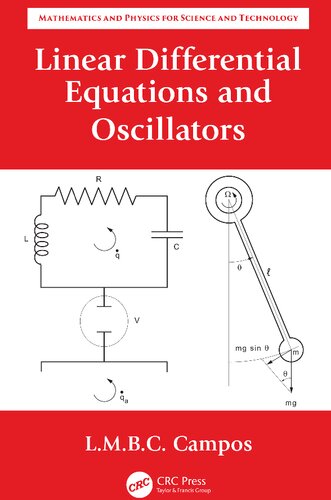

Most ebook files are in PDF format, so you can easily read them using various software such as Foxit Reader or directly on the Google Chrome browser.
Some ebook files are released by publishers in other formats such as .awz, .mobi, .epub, .fb2, etc. You may need to install specific software to read these formats on mobile/PC, such as Calibre.
Please read the tutorial at this link: https://ebookbell.com/faq
We offer FREE conversion to the popular formats you request; however, this may take some time. Therefore, right after payment, please email us, and we will try to provide the service as quickly as possible.
For some exceptional file formats or broken links (if any), please refrain from opening any disputes. Instead, email us first, and we will try to assist within a maximum of 6 hours.
EbookBell Team

4.0
96 reviews
Linear Differential Equations and Oscillators is the first book within Ordinary Differential Equations with Applications to Trajectories and Vibrations, Six-volume Set.As a set, they are the fourth volume in the series Mathematics and Physics Applied to Science and Technology. This first book consists of chapters 1 and 2 of the fourth volume.
The first chapter covers linear differential equations of any order whose unforced solution can
be obtained from the roots of a characteristic polynomial, namely those: (i) with constant
coefficients; (ii) with homogeneous power coefficients with the exponent equal to the order of
derivation. The method of characteristic polynomials is also applied to (iii) linear finite difference
equations of any order with constant coefficients. The unforced and forced solutions of (i,ii,iii) are
examples of some general properties of ordinary differential equations.
The second chapter applies the theory of the first chapter to linear second-order oscillators with
one degree-of-freedom, such as the mechanical mass-damper-spring-force system and the
electrical self-resistor-capacitor-battery circuit. In both cases are treated free undamped, damped,
and amplified oscillations; also forced oscillations including beats, resonance, discrete and
continuous spectra, and impulsive inputs.